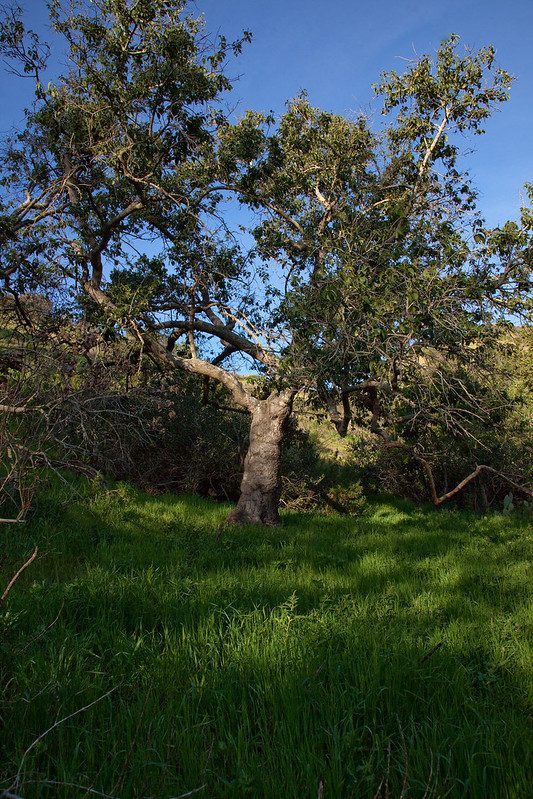CONSERVATION - HABITAT CONSERVATION
Restoration Plantings
Plant restoration is the practice of renewing and restoring damaged, degraded, or destroyed ecosystems or habitats by active human interruption or action.
Invasive Species
Catalina Island has a long history of disturbance due to invasive herbivores and invasive plants. Invasive herbivores such as deer, goats, and pigs have caused significant damage to our island’s ecosystems. The plants on Catalina Island evolved without the presence of these herbivores, so they do not have the same defenses that many of their mainland counterparts have. This makes many plants on Catalina Island much more susceptible to herbivory. Invasive herbivores also cause lasting damage to the landscape such as animal trails, which compact the soil and increase erosion. Invasive plants also pose a threat to native plant communities as they outcompete native plants for resources like water, sunlight, and nutrients.

One of many examples of this is the Hollyleaf cherry (Prunus ilicifolia ssp. ilicifolia), which has been shown to have smaller leaves with more spines than its island counterpart, the Catalina cherry (Prunus ilicifolia ssp. lyonii).
Catalina Island Conservancy and its staff have been working hard to restore the beautiful landscape and ecosystems of Catalina Island. In 2021, Conservancy staff built five exclosures after the Middle Fire to protect the nutrient-dense seedlings from deer. These exclosures have allowed native plant species such as Island rush-rose (Crocanthemum greenei), Fragrant pitcher sage (Lepechinia fragrans), and Trask’s yerba santa (Eriodictyon traskiae subsp. traskiae) to survive and thrive.
In 2022, Conservancy staff removed one of Catalina’s worst invasive species, Flax-leaved broom (Genista linifolia) from the slopes along Stage Road. Conservancy staff plan to continue invasive species management, install erosion control, and a watering system to restore these slopes to its former Chapparal habitat of Felt-leaf ceanothus (Ceanothus arboreus) and Catalina mountain-mahogany (Cercocarpus traskiae).
In 2022, Conservancy staff were able to complete a Coastal Sage Scrub Restoration Project at Little Harbor. Conservancy staff removed invasive plant species, installed exclosure fencing, and will soon be planting rare and native plant species such as Malva rosa (Malva assurgentiflora ssp. glabra), Giant coreopsis (Leptosyne gigantea), Cliff spurge (Euphorbia misera), Island bush-mallow (Malacothamnus fasciculatus var. catalinensis), Island buckwheat (Eriogonum grande var. grande), and Island green dudleya (Dudleya virens ssp. insularis). The Coastal Sage Scrub Restoration Project is conveniently located on the slope near the beach access road and trail connecting Little Harbor and Shark Harbor for all visitors to see.
You can volunteer on our restoration projects to assist with outplanting or maintenance.
To learn more, please contact our Volunteer Coordinator.
